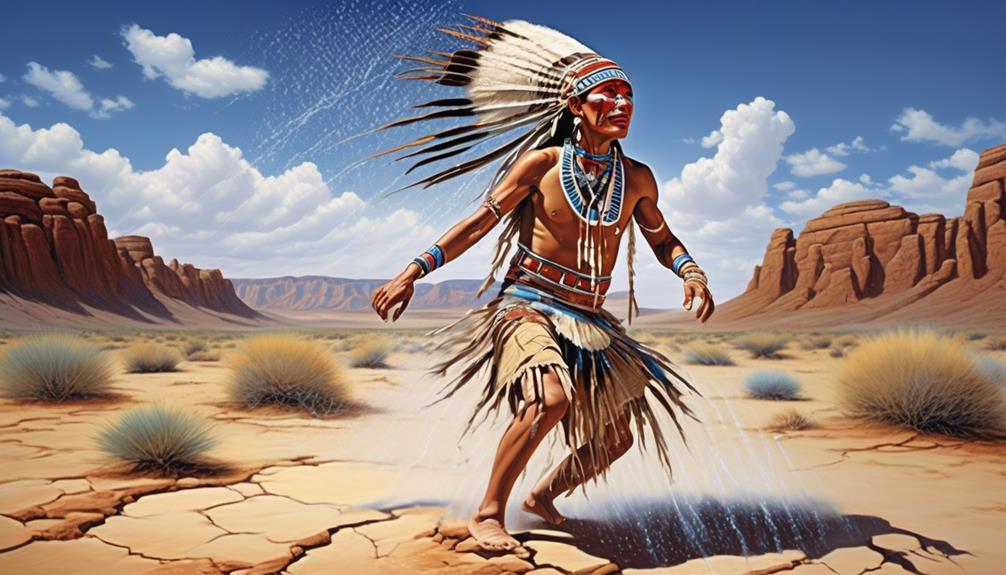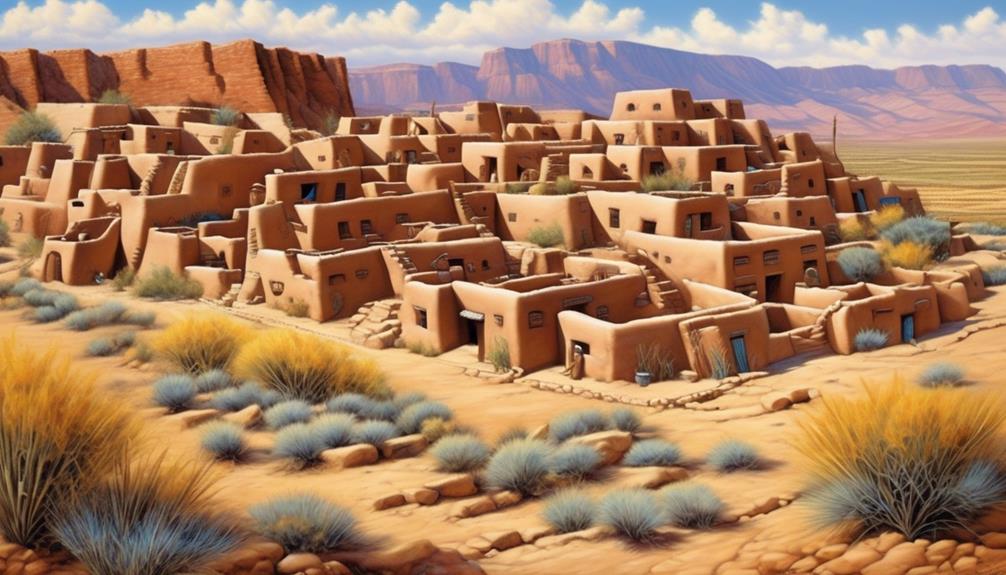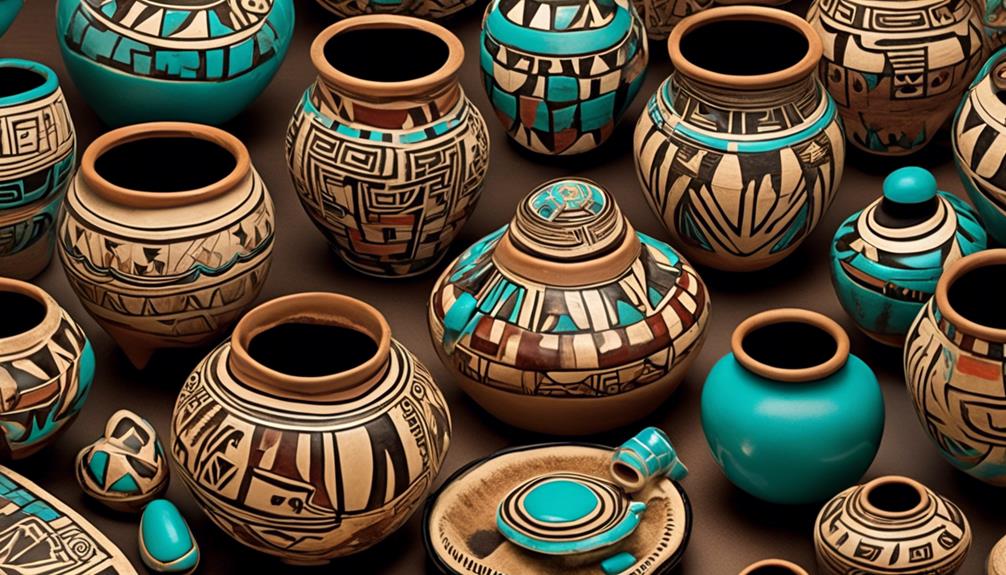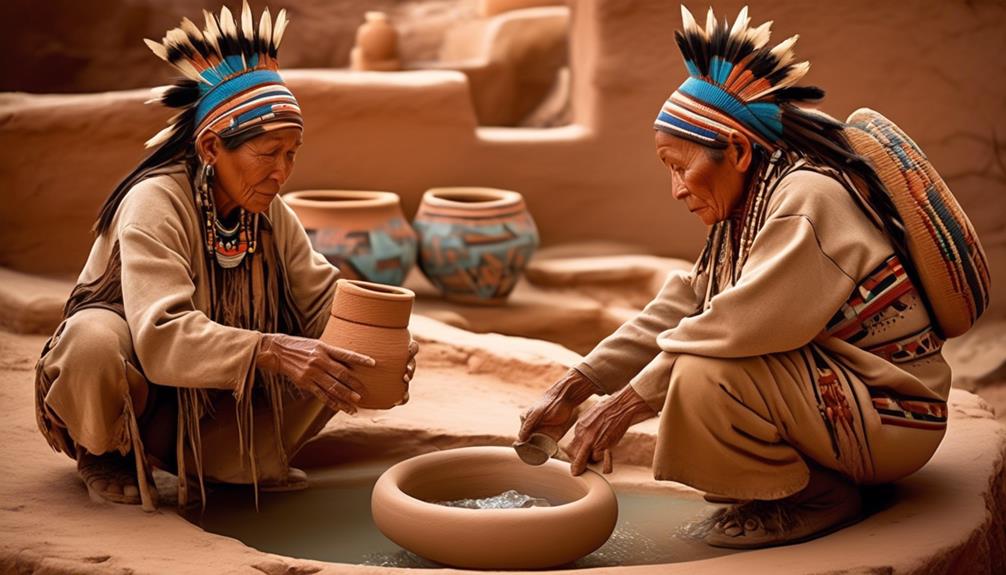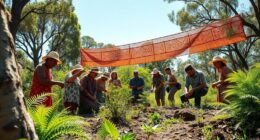Did you realize that the Hopi Tribe in Arizona has successfully upheld a sustainable way of life for more than 2,000 years in one of the driest regions in America, even as the effects of climate change on indigenous communities continue to be a widely discussed issue?
Their traditional agricultural practices and cultural respect for natural resources have not only ensured their survival but also contributed to climate resilience in the face of changing environmental conditions.
But what exactly did the Hopi Tribe do to adapt and thrive in such a challenging climate?
Key Takeaways
- The Hopi Tribe has practiced traditional agricultural techniques such as contour farming, terracing, crop rotation, and dry farming to conserve water and preserve soil.
- The Hopi Tribe has a deep respect for natural resources and cultivates native crops for sustenance and biodiversity preservation, reflecting the delicate balance required for ecosystem harmony.
- The Hopi Tribe employs climate-resilient architecture and infrastructure, using sustainable building techniques, eco-friendly design principles, and energy-efficient structures to reduce environmental impact and reliance on mechanical heating and cooling systems.
- The Hopi Tribe intertwines spiritual ceremonies with environmental stewardship, celebrating their connection to the earth through community gatherings, sacred rituals, and expressing gratitude for the environment, reinforcing the importance of preserving the earth for future generations.
Traditional Agricultural Practices
Incorporating ancient techniques and wisdom passed down through generations, the Hopi Tribe actively engages in traditional agricultural practices to sustain their community and preserve their cultural heritage. Soil conservation is a fundamental aspect of the Hopi agricultural tradition. The tribe employs techniques such as contour farming, terracing, and crop rotation to prevent soil erosion and maintain soil fertility. By carefully tending to the land, they ensure its productivity for future generations.
Water management is another crucial component of the Hopi agricultural practices. The tribe has developed sophisticated irrigation systems that efficiently distribute water to their crops, maximizing its use in the arid desert environment they inhabit. Additionally, the Hopi people have a deep understanding of the natural water cycles and incorporate this knowledge into their farming practices.
Through these traditional agricultural methods, the Hopi Tribe not only sustains their community but also demonstrates a profound respect for the land and the natural resources it provides. Their practices serve as a testament to the intricate relationship between the tribe and the environment, showcasing a harmonious way of life that's intricately woven into their cultural identity.
Cultural Respect for Natural Resources
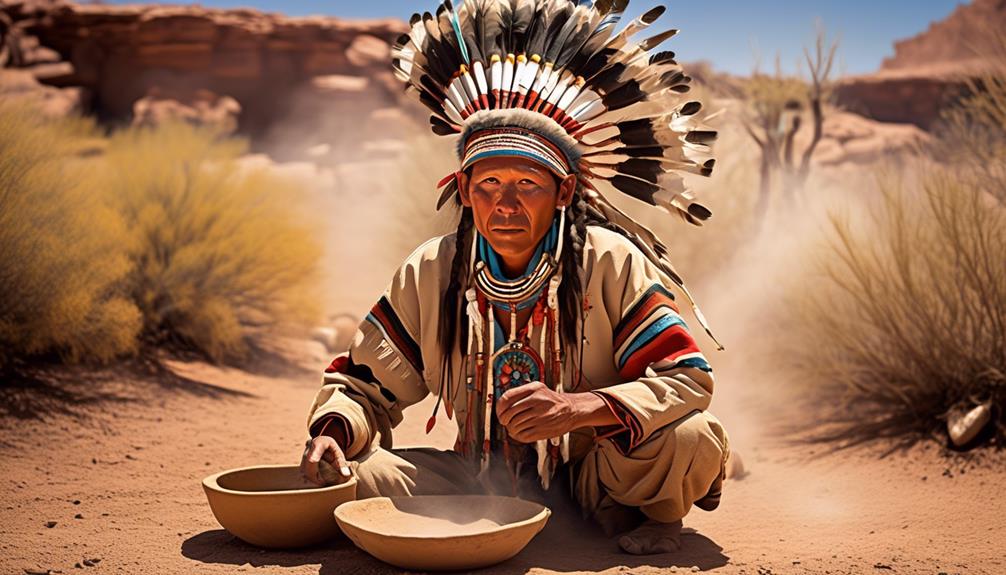
How do the Hopi Tribe demonstrate their cultural respect for natural resources through their traditional agricultural practices? The Hopi Tribe's cultural respect for natural resources is deeply ingrained in their traditional knowledge and sustainable living practices, which have been passed down through generations, reflecting their rich cultural heritage. The Hopi people understand the delicate balance required for ecosystem harmony and have developed agricultural techniques that honor and preserve the land. One such practice is dry farming, where crops are cultivated using traditional methods that promote water conservation and soil preservation. This method reflects the Hopi Tribe's commitment to sustainable living and their reverence for the natural resources provided by the earth. Additionally, the cultivation of native crops such as corn, beans, and squash not only sustains the Hopi people but also contributes to the preservation of biodiversity. By nurturing the land in a manner that respects its natural rhythms, the Hopi Tribe exemplifies their deep cultural respect for natural resources.
| Traditional Agricultural Practices | Cultural Respect for Natural Resources |
|---|---|
| Dry farming techniques | Reflecting the delicate balance required for ecosystem harmony, the Hopi people use traditional methods that promote water conservation and soil preservation. |
| Cultivation of native crops | The cultivation of native crops sustains the Hopi people and contributes to the preservation of biodiversity, showcasing their reverence for the natural resources provided by the earth. |
Climate-Resilient Architecture and Infrastructure
The Hopi Tribe demonstrates their commitment to sustainable living and environmental stewardship through their traditional architectural and infrastructural practices that are designed to withstand the challenges of their local climate. This dedication is evident in the following ways:
- Sustainable building techniques:
The Hopi Tribe utilizes sustainable building techniques that have been passed down through generations, incorporating indigenous materials such as adobe and local stone. These materials not only blend harmoniously with the natural landscape but also provide excellent insulation, keeping homes cool in the scorching desert heat and warm during chilly nights.
- Eco-friendly design:
The tribe's architecture embraces eco-friendly design principles, with structures strategically oriented to maximize natural ventilation and minimize the need for artificial cooling. Additionally, the use of earth-based materials reduces the environmental impact associated with modern construction practices.
- Energy-efficient structures:
Hopi dwellings are designed to optimize energy efficiency, with thick walls and small windows to regulate interior temperatures, reducing the reliance on mechanical heating and cooling systems. This mindful approach to architecture aligns with the tribe's reverence for the land and its resources, reflecting a harmonious coexistence with nature.
Spiritual Ceremonies and Environmental Stewardship
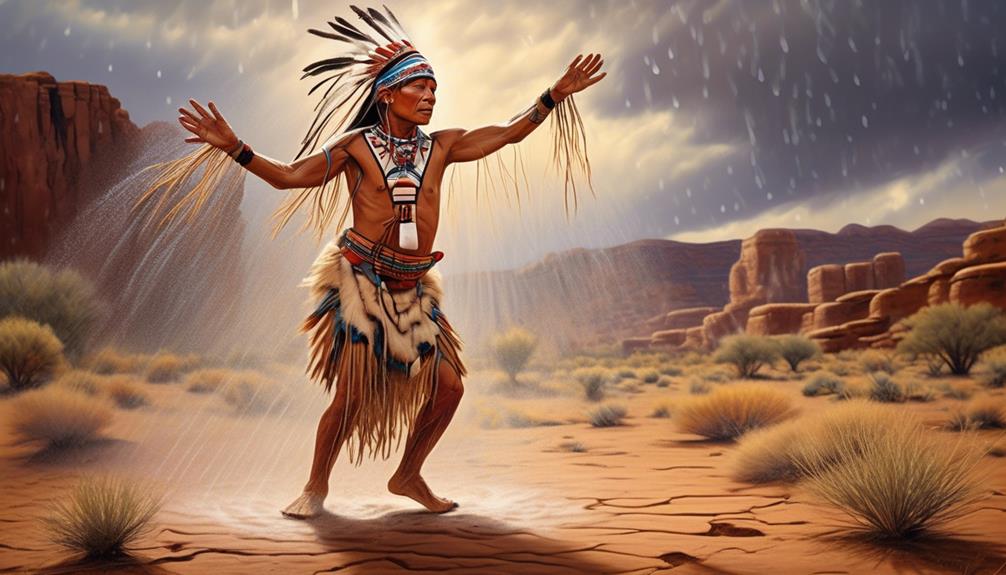
Demonstrating a deep connection to the natural world, the Hopi Tribe intertwines spiritual ceremonies with their unwavering commitment to environmental stewardship, embodying a profound reverence for the land and its resources.
Community gatherings play a central role in the Hopi way of life, providing opportunities for individuals to come together and celebrate their connection to the earth. During these gatherings, the tribe engages in sacred rituals that honor the natural elements and express gratitude for the environment's abundance. These rituals are deeply rooted in the belief that humans aren't separate from nature but an integral part of it. Through these ceremonies, the tribe reinforces the importance of preserving the earth for future generations.
Moreover, the Hopi Tribe's environmental stewardship is further exemplified through their sustainable practices, such as water conservation and agricultural techniques that have been passed down through generations. By integrating spiritual ceremonies with environmental consciousness, the Hopi Tribe sets an inspiring example of how cultural traditions can harmoniously coexist with modern environmental values.
Adaptation Strategies for Changing Weather Patterns
In response to changing weather patterns, the Hopi Tribe has implemented proactive adaptation strategies rooted in their deep understanding of the natural environment and traditional ecological knowledge. These strategies are essential for preserving the tribe's way of life and ensuring the resilience of their communities in the face of climate change.
- Indigenous Knowledge: The Hopi Tribe draws upon centuries of indigenous knowledge passed down through generations, incorporating traditional farming practices and natural resource management techniques that have proven effective in adapting to fluctuating weather patterns.
- Weather Forecasting: The tribe embraces a combination of modern meteorological science and traditional weather forecasting methods to anticipate and prepare for changing weather patterns. By combining these approaches, the Hopi Tribe can make informed decisions about agricultural practices and water management.
- Cultural Resilience: The Hopi Tribe's adaptation strategies not only focus on practical measures but also prioritize the preservation of cultural traditions and community cohesion. By strengthening their cultural resilience, the tribe is better equipped to face the challenges posed by changing weather patterns while maintaining their distinct way of life.
Frequently Asked Questions
How Has the Hopi Tribe's Traditional Agricultural Practices Evolved Over Time to Adapt to Changing Climate Conditions?
We've witnessed the Hopi Tribe's agricultural practices evolving over time to adapt to changing climate conditions.
Their evolutionary practices are deeply rooted in sustainable farming adaptations, such as crop diversification and water conservation techniques.
What Specific Cultural Beliefs and Values Does the Hopi Tribe Hold That Guide Their Respectful Use of Natural Resources?
Our cultural beliefs guide our respectful use of natural resources, shaping our traditional practices and environmental stewardship.
We honor the interconnectedness of all life through spiritual ceremonies, nurturing the land for future generations.
Our values emphasize harmony with nature, reflecting in our adaptation to changing climate conditions.
This deep-rooted reverence for the earth informs our sustainable agricultural methods and commitment to preserving our environment.
Can You Provide Examples of Climate-Resilient Architecture and Infrastructure Used by the Hopi Tribe and How It Has Helped Them Adapt to Climate Change?
We've seen how the Hopi Tribe's climate-resilient architecture and infrastructure adaptation techniques have played a crucial role in their ability to adapt to climate change.
Their traditional farming methods and climate-resilient practices, deeply rooted in their cultural beliefs, have also contributed to their resilience.
How Do Spiritual Ceremonies Play a Role in the Hopi Tribe's Environmental Stewardship and Conservation Efforts?
Spiritual practices are integral to our environmental stewardship and conservation efforts. They guide our connection to the land and influence our traditional agriculture, promoting sustainable practices.
Through ceremonies, we honor nature, fostering a deep respect for the Earth. This reverence inspires us to adapt to climate change, preserving our ancestral knowledge for future generations.
Our commitment to conservation is rooted in these sacred traditions, shaping our harmonious relationship with the environment.
What Specific Adaptation Strategies Has the Hopi Tribe Implemented to Address the Challenges Posed by Changing Weather Patterns, and How Effective Have They Been?
Adaptation strategies are central to our resilience. Traditional agriculture, climate-resilient architecture, and spiritual ceremonies all play vital roles.
We've cultivated drought-resistant crops, built homes that withstand extreme weather, and continue to honor our sacred ceremonies that foster a deep connection to the land.
These strategies have been effective in mitigating the impacts of changing weather patterns, preserving our cultural practices, and ensuring the sustainability of our community.
Conclusion
In conclusion, the Hopi tribe's deep connection to the land and their innovative adaptation strategies serve as a beacon of hope in the face of climate change.
Like a sturdy oak tree weathering the storm, their traditional agricultural practices, respect for natural resources, resilient architecture, and spiritual ceremonies are a testament to their resilience and commitment to environmental stewardship.
The Hopi tribe's wisdom and resourcefulness offer valuable lessons for all in navigating the challenges of a changing climate.
